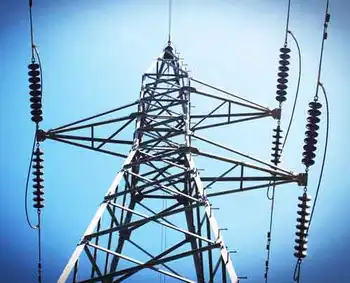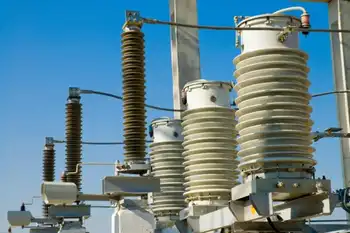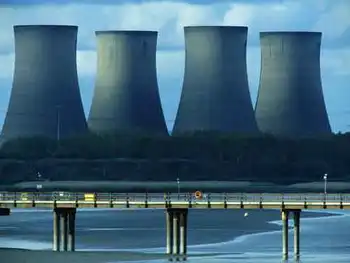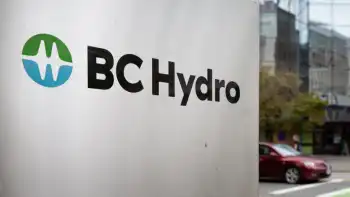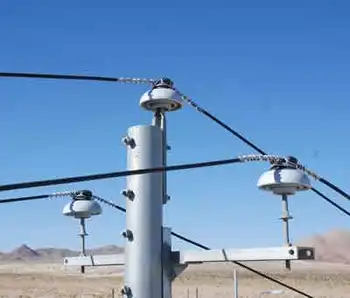Illinois power industry to dig deep for 2010
By Chicago Tribune
Protective Relay Training - Basic
Our customized live online or in‑person group training can be delivered to your staff at your location.

- Live Online
- 12 hours Instructor-led
- Group Training Available
President Barack Obama traveled to the Climate Change Conference in Copenhagen and pledged a 17 percent reduction in U.S. greenhouse gas emissions by 2020; coal-fired plants happen to be the single biggest contributor of such pollution.
What's more, a climate bill passed by the House poses a threat to coal-fired plants and to the Illinois coal mining industry. The utilities already are predicting closures of some coal-fired plants, job losses and the possibility of double-digit increases in electric bills.
But the bill's proponents say the rewards would far outweigh any near-term impact on consumers or coal power generation and mining.
"The reason it's a good thing to raise the price of burning carbon is it will provide incentives for everybody — from the power plants to the scientists — to use less carbon.... It would produce a better mousetrap," said Don Fullerton, finance professor at the University of Illinois and an expert on the economic impact of environmental regulations.
The hope, said Fullerton, is that the pressure to reduce pollution will force manufacturers to make things more efficiently, and that as electricity rates rise, efficiency ratings would help guide consumers' decisions on purchases of everything from big-screen TVs to electronic gadgets.
"The problem is really only during the transition," Fullerton said. "There's no long-run problem here at all."
About 50 percent of power in the U.S. is produced by coal-fired power plants. The most readily available alternative fuel for companies that run coal-fired power plants is natural gas, which emits half the emissions of coal but is four times more expensive.
The cost differential between the two fuels could soon shrink dramatically, however. Under the House bill's cap-and-trade program, polluters that emit more than 25,000 tons of greenhouse gas emissions per year must have federal permits, called "allowances" for each ton of pollution emitted into the atmosphere, that can be traded.
The program reduces the number of available allowances issued each year, which forces polluters to either find technologies to decrease their emissions while they continue to operate, purchase permits from other companies or face the possibility of shutting down.
The tightening on emissions is gradual. In 2012, across the United States, industrial companies must decrease pollution enough that it would average out to about 3 percent below 2005 emission levels. As allowances continue to decrease, that overall reduction would move to 83 percent below 2005 levels in 2050.
Illinois is ranked first in the nation for nuclear generation, the cleanest form of energy in terms of greenhouse emissions, and sixth highest for carbon dioxide emissions, according to the Energy Information Administration, an analytical arm of the U.S. Department of Energy. Electric power generation is split evenly at 48 percent between nuclear and coal plants.
Illinois has 25 coal-fired power plants; the least efficient would likely be the first to face extinction if the emission standards are put into force.
"Plants might be shut down. That would mean, yes, joblessness," said Susan Gallagher, spokeswoman for Ameren Corp., which operates half a dozen coal-fired power plants in southern and central Illinois.
Ameren anticipates a move to natural gas as a fuel to generate electricity, which is now used mostly for peaking power. When that conversion takes place, officials say they expect consumers' bills to increase in the double-digit range.
Chicago-based Midwest Generation LLC, with six coal-fired power plants in Illinois, doesn't expect climate change legislation will be the end of coal, spokesman Douglas McFarlan said. Still, the firm is planning for the worst-case scenario — that coal will be phased out.
"We're transitioning to more renewable energy over time, but we need a bridge to get us there," McFarlan said, adding that the company also owns natural gas power plants and is looking at alternative ways to generate power that could replace coal plants. The company, which has mostly Chicago-area plants that produce enough electricity to power roughly 6 million homes, supports the House climate bill, McFarlan said, because it provides for a reasonable transition period.
In the beginning, allocations for carbon emissions would be equal to approximately half of Midwest Generation's emissions, McFarlan said. As a competitive generator with coal-fired power plants, Midwest Generation, along with all Illinois electricity generators that run coal-fired plants, falls under a category called "merchant generator," which permits it a certain number of allowances.
Midwest Generation forecasts that initially it would need to purchase credits for about half of its carbon dioxide emissions; the remainder would not cost anything at this point. Over time, however, the utility would need to purchase credits for a larger percentage of its emissions, making it economically more viable to switch to natural gas generation and other methods, McFarlan said.
"Some people call it a dash to gas," he said.
McFarlan confirmed that consumers can expect to see double-digit increases in their electricity bills.
Midwest Generation employs about 1,100 plant workers and support staff, he said, and job skills transfer well between coal and natural gas plants, which the company also owns.
The EPA's analysis of the House-passed climate and energy bill found that the changes would have a modest economic impact on the average household in terms of higher energy prices and the cost of goods and services.
The view from the National Association of Manufacturers is much more dire. In a state-by-state analysis commissioned by the association, it estimated that Illinois would lose between 88,400 and 120,340 jobs by 2030 if the bill were to pass and that electricity prices would increase up to 60 percent. Also, Illinois coal production would fall between 70.5 percent and 76.8 percent, according to the study.
The Union of Concerned Scientists, a research and advocacy group, said that study "grossly exaggerates" the costs of the climate bill based on flawed assumptions that confuse the public, and the nonpartisan Congressional Budget Office concluded that the bill, which includes assistance for low-income families, would cost households about $175 per year.
Policy experts said they didn't expect immediate widespread closure of coal plants if the bill became law. The fate of the House bill now falls to the Senate, which is not expected to vote on the bill until spring.
"There's a long ways to go for coal to be forced out because it has a huge cost advantage over the next thing," said John Birge, the Jerry W. and Carol Lee Levin professor of operations management at the University of Chicago Booth School of Business. "Electricity prices would have to go up a lot in terms of shutting down coal plants."
The least-efficient coal plants would shut down earlier, but the cost of electricity would need to triple, Birge said, before the country would see wide-scale closures.
It could be another 50 years, he said, before these measures could produce any jobs.
The crackdown on pollution comes as Illinois is on the brink of a huge increase in coal production, brought on by a spike in the price of lower-sulfur coal that was being used in power plants on the East Coast, said Phillip Gonet, president of the Illinois Coal Association.
The spike was enough to make it economically feasible for those plants to purchase Illinois coal, pay additional transportation costs and install "scrubbers" on their plants that remove the excess sulfur. The increase, said Gonet, also is being driven by coal gasification plants under construction in Illinois.
Until 1990, Illinois produced about 62 million tons of coal annually. The introduction of Clean Air Act standards, he said, hurt coal production, which dropped to 31 million tons annually by 2003. Since then, production and employment (about 3,500 mine employees) has remained steady.
Three mines are under construction that would nearly double coal production in Illinois, Gonet said, and others are in the permitting process. At the same time, the nation's largest coal company, St. Louis-based Peabody Energy is building a 1,600-megawatt plant in Washington County.
"We're opposing all that legislation because we think it would be the end of the use of coal, period," Gonet said. "What are you going to do when you turn on the light switch and the lights don't come on because you don't have enough energy supply for the country?"
But Charles Jackson, executive director of the Illinois Environmental Council, said new sources of energy will step up to replace coal. A 2007 state law requires Illinois power companies to get 10 percent of their electricity from green energy sources by 2015 and 25 percent by 2025.
"Reducing pollution from coal-fired power plants will be achieved primarily through reducing the need for these plants by implementing energy conservation and energy efficiency measures and increasing our reliance on renewable energy sources such as wind and solar," Jackson said.
Maximilian Auffhammer, an environmental economist at the University of California at Berkeley, has been keeping a close eye on global greenhouse gas emissions. The U.S. target under Kyoto would have been a 7 percent reduction relative to 1990 levels, he said, but by 2007, U.S. emissions had increased 17 percent.
Auffhammer called a 17 percent reduction "ambitious" yet achievable, pointing out that even at that level, the United States would still be only 3 percent behind 1990 levels.
"A cap and trade system, combined with some aggressive energy efficiency policies, such as national building codes, which address other market failures not well fixed by tax or cap and trade, can get us there at costs that are not excessive," he said.





